- Joined
- Oct 9, 2007
- Messages
- 47,670 (7.43/day)
- Location
- Dublin, Ireland
| System Name | RBMK-1000 |
|---|---|
| Processor | AMD Ryzen 7 5700G |
| Motherboard | Gigabyte B550 AORUS Elite V2 |
| Cooling | DeepCool Gammax L240 V2 |
| Memory | 2x 16GB DDR4-3200 |
| Video Card(s) | Galax RTX 4070 Ti EX |
| Storage | Samsung 990 1TB |
| Display(s) | BenQ 1440p 60 Hz 27-inch |
| Case | Corsair Carbide 100R |
| Audio Device(s) | ASUS SupremeFX S1220A |
| Power Supply | Cooler Master MWE Gold 650W |
| Mouse | ASUS ROG Strix Impact |
| Keyboard | Gamdias Hermes E2 |
| Software | Windows 11 Pro |
What's this? A new high-end internal sound-card launch? From EVGA? We must be dreaming! The NU-Audio internal sound card is the most unexpected product from our visit to EVGA's suite on Monday. Developed in partnership with British audiophile hardware maker Audio Note and sold under the EVGA badge, the NU-Audio is a full-height internal sound card with PCI-Express 2.0 x1 bus interface. At its heart is an XMOS xCORE 200 PCIe audio processor with an Azalia-like pipeline. The main DAC is an Asahi Kasei AK4493, fronted by an Analog Devices OP275 OPAMP for the main headphones channel, and AD8056 for the line-out channel.
The card has some serious input chops as output, with the main line-in powered by an Asahi Kasei AK5572, and a Cirrus Logic CS53456 for the microphone-in channel. As an analog sound card, you only get 2 channels. You'll need optical TOSLINK for 5.1 channels. A combination of WIMA and Audio Note electrolytic capacitors are used across the card. The electrical area is ground-layer isolated, draws power from a SATA power input, and uses a Texas Instruments TPS7A47 voltage regulator. All connections between the electrical and audio areas are filtered, and copper EMI shielding covers vital audio components, in addition to the outer shroud. The PCB itself is chunky (possibly 4-layer with 2 oz copper layers).
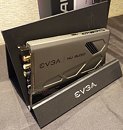
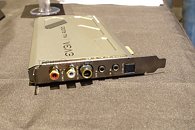
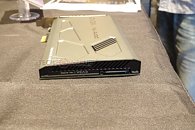
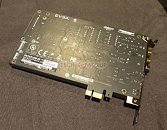
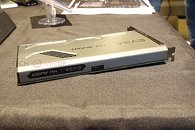
Moving on to specs that matter, the analog stereo out SNR is rated at 123 dBA, and the line-in at 121 dBA. The audio processor can handle 32-bit / 384 kHz stereo audio formats through the analog channel, and 24-bit / 192 kHz through digital TOSLINK. The card supports high-impedance headphones. The software fully supports the latest versions of Windows 10 and Windows 7. The NU-Audio will command a stellar price tag owing to its Avant Grade components.
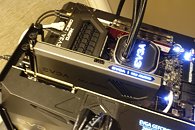
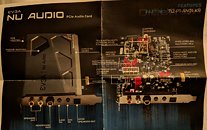
View at TechPowerUp Main Site
The card has some serious input chops as output, with the main line-in powered by an Asahi Kasei AK5572, and a Cirrus Logic CS53456 for the microphone-in channel. As an analog sound card, you only get 2 channels. You'll need optical TOSLINK for 5.1 channels. A combination of WIMA and Audio Note electrolytic capacitors are used across the card. The electrical area is ground-layer isolated, draws power from a SATA power input, and uses a Texas Instruments TPS7A47 voltage regulator. All connections between the electrical and audio areas are filtered, and copper EMI shielding covers vital audio components, in addition to the outer shroud. The PCB itself is chunky (possibly 4-layer with 2 oz copper layers).





Moving on to specs that matter, the analog stereo out SNR is rated at 123 dBA, and the line-in at 121 dBA. The audio processor can handle 32-bit / 384 kHz stereo audio formats through the analog channel, and 24-bit / 192 kHz through digital TOSLINK. The card supports high-impedance headphones. The software fully supports the latest versions of Windows 10 and Windows 7. The NU-Audio will command a stellar price tag owing to its Avant Grade components.


View at TechPowerUp Main Site




